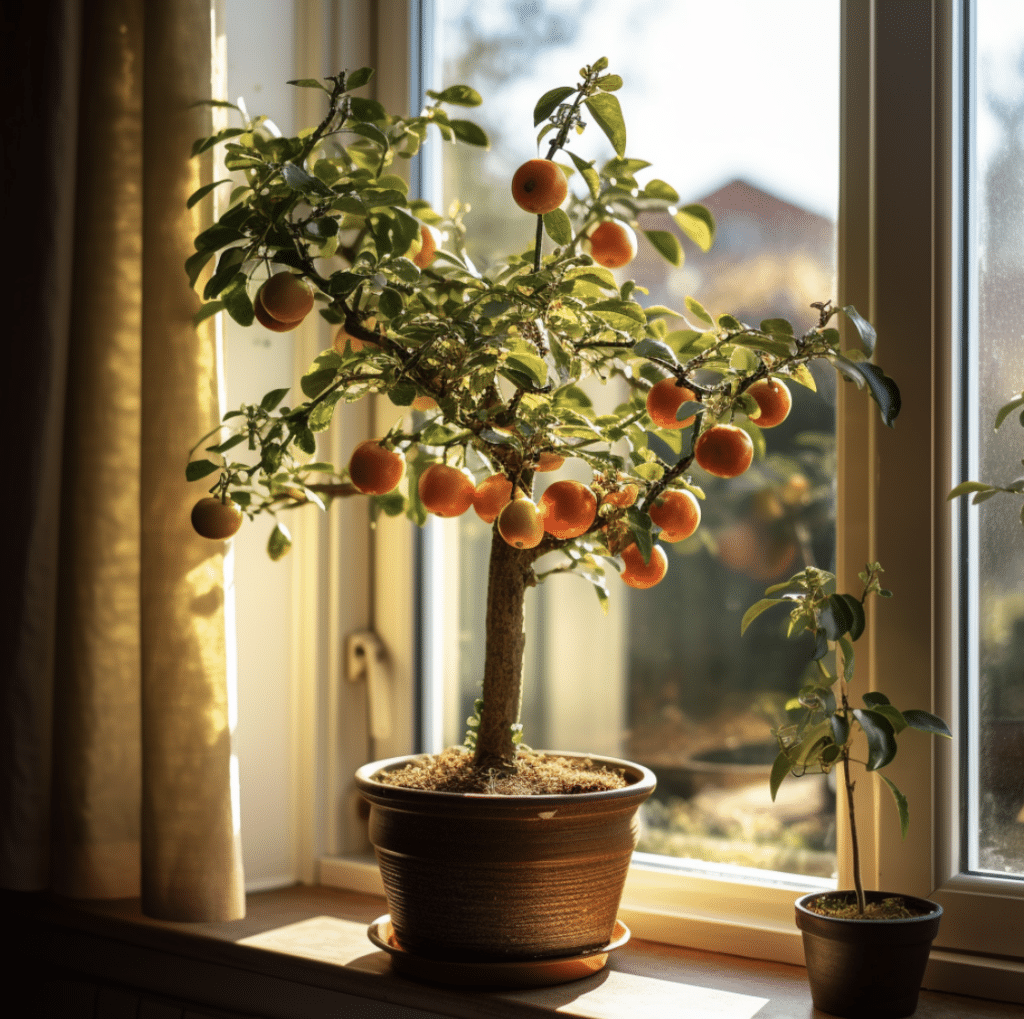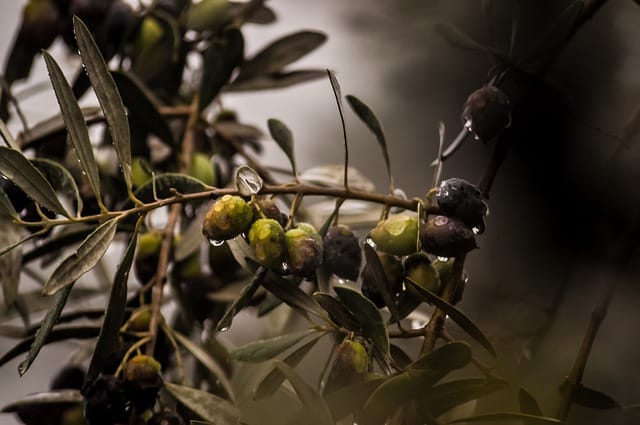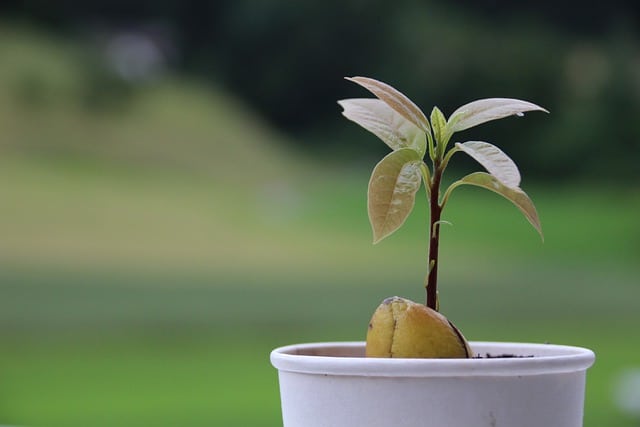[Update: 03/05/2024 we added a section on overcoming lighting challenges indoors]
Introduction – Indoor Fruit Plants
We updated our list of indoor fruit plants and trees! Growing food at home and buying local are ways to reduce your food carbon emissions footprint. One way to achieve the former is growing indoor fruit plants. Indoor fruit plants are a great way to get fresh fruit all year round, even in cold climates. Various fruit trees and bushes can be grown indoors, including citrus, apples, pears, peaches, plums, and cherries. Fruit plants need lots of sunlight to produce fruit, so a sunny windowsill is a perfect spot for them. They must also be kept moist, so water them regularly and mist the leaves with water every few days. In this article, we’ll look at 7 options.

Most indoor fruit trees need to be pollinated by hand. This is easily done by using a small paintbrush or cotton swab to transfer pollen from the male organ (the stamen) to the flower’s female organ (the pistil). Once the flowers are pollinated, they will develop into fruits.
Indoor fruit plants need to be fertilized regularly to produce bountiful harvests. Use a fertilizer formulated for fruit trees and bushes, and apply it every two weeks during the growing season. With proper care, your indoor fruit plants will provide fresh fruits for many years.
Best Indoor Fruit Trees
While many fruit trees require a lot of space and sunlight to thrive, a few varieties can be successfully grown indoors. If you’re looking for the best indoor fruit trees for your home, here are a few of the most popular options.

1. ‘Improved Meyer’ Lemon:
This is a small, compact variety of lemon that’s perfect for indoor growing. The ‘Improved Meyer‘ lemon tree has fragrant flowers and can bear fruit year-round when properly cared for. It requires at least eight hours of direct sunlight daily, so placing it near a south-facing window is ideal. Water when the top inch or two of the soil is dry, and fertilize every few weeks during the growing season. With proper care, you can expect your indoor lemon tree to live for many years and provide plenty of delicious fruit.
2. Calamondin Orange
Calamondin oranges are a type of citrus fruit that is ideal for growing indoors. These oranges are small and round, with a bright orange color. Calamondin oranges are also very easy to care for and can thrive in a wide range of climates. In addition, Calamondin oranges produce a large amount of fruit, making them a great option for those who want to enjoy fresh oranges year-round.
This remains as a top choice for indoor citrus. These small, round oranges are aesthetically pleasing and fragrant. They do require a lot of light and should be placed near a south-facing window. Water when the top inch of the soil has dried, and use a citrus-specific fertilizer to maintain plant health.
3. Goji Berries
With appropriate lighting, Goji berries can be a successful indoor plant. They require deep, infrequent watering, allowing the soil to dry out between waterings.
Goji berries are great antioxidants and have a wide range of health benefits. Goji berries are also low in calories and fat and contain no cholesterol. Goji berries are a good source of fiber and contain vitamins A, C, and E. Goji berries are also a good source of iron and calcium. Goji berries are easy to grow and require very little maintenance.
Goji berries can be grown in pots or containers, and they can be grown indoors or outdoors. Goji berries are also relatively pest-resistant. Goji berries can be eaten fresh, dried, or cooked. Goji berries can make teas, juices, jams, and wines. You can add goji berries to salads, cereal, soups, and stir-fries. Goji berries are an excellent addition to any diet.
4. Figs
There are several fig varieties suitable for indoor growing, with the ‘Petite Negra‘ being a good choice. These small trees can be kept around 3-5 feet tall with regular pruning. Figs need a lot of light, so they should be placed in a sunny location. Figs do best with deep, infrequent watering, allowing the top inch of the soil to dry out between watering. Figs also prefer a slightly pot-bound condition, so avoid frequent repotting.
5. Banana
Certain dwarf banana varieties can be grown indoors with enough light and care. ‘Dwarf Cavendish‘ is a good variety for indoor growth, as it stays relatively small and can produce fruit under optimal conditions. Banana plants require a lot of light and regular watering, with the soil allowed to dry out slightly between watering sessions.
Water them when the soil is dry and fertilize them monthly. Banana trees can be grown in pots or on the ground. If you live in a cold climate, you can grow banana trees indoors.
They will need a bright spot near a window. Banana trees do not like drafts, so ensure they are not near a door or window that is often opened.

6. Dwarf Cherries
Cherries are traditionally outdoor trees, but certain dwarf varieties like ‘Compact Stella‘ or ‘Nanking‘ can be grown indoors. They’ll need a lot of light and regular watering, allowing the soil to dry out a bit between watering sessions. Dwarf cherry trees are self-pollinating, so you only need one tree to produce fruit. Keep in mind that they may still need a slight winter chill to produce well, which can be achieved by placing them in a cool room during the winter months.
7. Strawberries
Strawberries are not trees but can be a great indoor fruit-producing plant. They prefer a sunny spot and need at least six hours of direct sunlight each day, but they can also tolerate artificial light. Strawberries prefer regular watering, but ensure the soil is well-draining to prevent root rot. A well-cared-for strawberry plant can provide a plentiful harvest of sweet, juicy fruit.
Overcoming Light Limitations for Indoor Fruit Plants
Indoor trees need a lot of sunshine, but if your space doesn’t get enough natural light, don’t worry! Advances in technology have made it possible to simulate natural sunlight using artificial grow lights. LED (Light Emitting Diode) and fluorescent lighting systems are particularly effective for growing fruit indoors.
These lights can provide the full spectrum of light that plants need to photosynthesize and produce fruit. LED lights are more energy-efficient and longer-lasting than traditional grow lights, making them an eco-friendly and cost-effective choice for indoor gardening.
By setting up a proper lighting system, you can ensure your indoor fruit plants receive the optimal amount of light, even during the darkest winter months. This is especially important for fruiting plants like ‘Improved Meyer’ lemons and Calamondin oranges, which require at least eight hours of direct sunlight a day.
Purchasing LED Grow Lights For Indoor Plants
Two recommended places are:
- Amazon: No doubt a source of LED grow lights suitable for different indoor garden sizes and requirements. For instance, the “Spider Farmer SF-2000 LED Grow Light” and “MARS HYDRO LED Grow Light” are highly recommended. They offer different coverage areas.
- Gardener’s Path: They offer different types of indoor gardening solutions, such as the “Glow ‘n’ Grow Garden Cart” and “Burpee 2-Tier Garden Cart“, which come with LED tubes and are designed for ease of use and efficiency. These carts provide different levels of space and coverage for your plants and are a good choice if you’re looking for a more structured setup.
Conclusions – Indoor Fruit Trees
In conclusion, these 7 indoor fruit trees are some of the best choices for those looking to grow fruit indoors. Each of these trees has its own unique set of benefits, making them all worth considering. Avocados, bananas, apricots, and mulberries are all excellent choices for indoor growers. So what are you waiting for? Plant an indoor fruit tree today!
